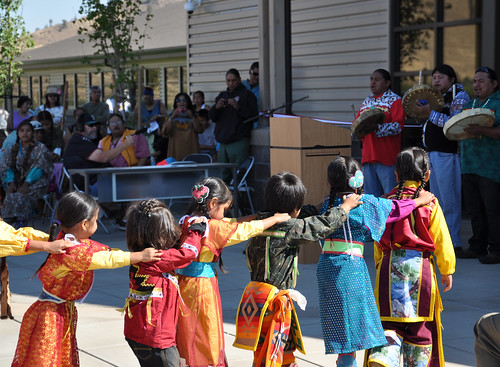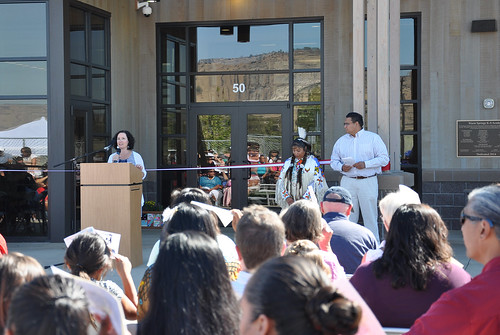
As young learners of the Warm Springs Indian Reservation of Oregon walk through the doors of their new school this month, they will become part of a new history of education ideals and community collaboration that will ensure their future success and well-being.
The new Warm Springs Academy, funded in part with a Community Facilities loan from USDA Rural Development and part by Jefferson County, replaces a cramped and neglected 1930s school building with a state-of-the-art complex featuring modern science and computer labs, art and music rooms, a gymnasium, a large gathering place for the cafeteria and kitchen, and many cultural features that celebrate the tribal community’s heritage and traditions.
Last month, I had the great privilege of joining the Warm Springs, Wasco and Paiute tribes to celebrate the completion of the school, just in time for the new school year. The dedication ceremony culminated the vision of the tribal council of the Confederated Tribes of the Warm Springs Reservation for a new educational experience for their children – one that will prepare them for their future leadership of the tribal community. Jefferson County also made a historic investment in the K-8 Warm Springs Academy. The $22 million school complex is a joint project between the tribal government and Jefferson County School District 509-J, both funded and administered with the support of residents and teachers on and off the reservation.
Such inter-governmental collaborations are the key to generating long-term prosperity and vitality in Indian Country and across rural America. Through President Obama’s Ladders of Opportunity agenda, the Administration is committed to supporting partnerships that ensure every child who works hard and plays by the rules, no matter where she is born, has the opportunity to succeed and prosper. USDA helps create opportunities across rural America by funding hundreds of libraries, schools, and hospitals and health clinics through our Community Facilities program.
In the educational arena, “the building fits the curriculum.” The reservation school built 84 years ago simply cannot accommodate modern teaching tools and techniques, including web-based resources, and would inhibit a student’s ability to partake of a full and rich learning experience. Research increasingly confirms that obsolete school facilities actually have a negative impact on the learning experience. Thus, I have to believe that a community’s investment in its schools is a powerful demonstration of the importance of putting children first in policy decisions and ensuring they have the best educational foundation – a value in turn reflected in the students’ achievements later on.
Warm Springs Academy is a testament to the commitment of the Confederated Tribes of Warm Springs Reservation of Oregon to high-quality education that respects our cultures and traditions. It was an honor to help dedicate this fine new facility that will develop the next generation of Native educators, innovators, scientists, nurses, businesspeople, and tribal leaders who will, one day, give back to their community.


